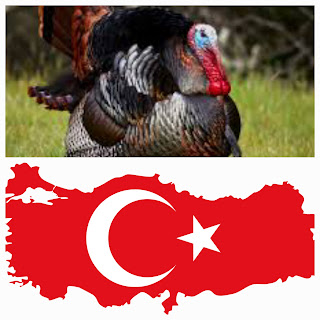Turkey Country Vs Turkey bird.
The relationship between Turkey, the country, and the turkey bird can be summarized through their shared name and some historical connections.
The name 'Turkey' for the country is thought to have originated from the Medieval Latin word "Turchia," which was used to refer to the lands of the Byzantine Empire ruled by the Turks. The Turks, in turn, were originally a Central Asian nomadic people who migrated to the region and played a significant role in shaping the history of the area.
However, the association with the turkey bird is less straightforward. The turkey bird, scientifically known as Meleagris gallopavo, is native to the Americas, specifically North America. It was originally domesticated by indigenous peoples in Mexico and was later brought to Europe by Spanish explorers in the 16th century. The Europeans initially mistook the bird for a type of guineafowl, which had a similar appearance to them, and thus called it "gallopavo."
When the Spanish traders brought the bird to Constantinople (now Istanbul) during the Ottoman Empire, it became popular throughout Europe. Since the Ottoman Empire had significant influence over the region known as Turkey today, Europeans began referring to the bird as the "turkey," associating it with the country where they first encountered it. This naming confusion resulted in the turkey bird being referred to by the same name as the country.
So, the relationship between Turkey, the country, and the turkey bird is primarily based on a historical coincidence of naming. While the origins of the country's name are tied to the Turkic peoples and their presence in the region, the association between the turkey bird and Turkey stems from the confusion caused by the bird's introduction to Europe via Ottoman trade routes.
Hi five!

Comments
Post a Comment